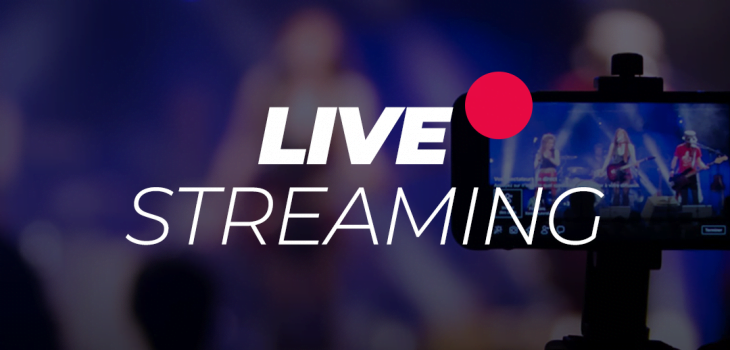 Live Streaming
Live Streaming
What is Live Streaming? | How Does Live Streaming…
What is Live Streaming?
Live streaming is the process of transmitting video content to viewers as it is being filmed in real-time. Live-streamed video is carried to its intended audiences through an array of streaming devices that are connected to the internet. Since video files are large, this requires powerful, dedicated technology.
The world has seen the value of live streaming technology over the past year with COVID-19-related lockdowns. Live streaming helps groups of people stay connected, no matter the circumstances. Whether it be distance, weather, or a pandemic, live streaming helps people come together in a safe way.
Live streaming is one of our services, in case you’d be interested don’t hesitate to contact us
How Does Live Streaming Work?
Live streaming works by delivering video to the viewers through varying streaming protocols over the internet in real-time, and without any video latency, with HLS, WebRTC, and RTMP being the most widely used delivery vehicles. Live streaming is used for many purposes in various industries. At its core, streaming content is meant to help people attend events, expos, and experiences that they cannot attend in person. Businesses and other organizations use live streaming to engage with their audiences.
Some of the most popular live streaming use cases include:
- Virtual events
- Online education (lectures, training, etc.)
- Sports coverage
- Concert streaming
- Video sales (product demos, sales pitches, etc.)
- Marketing
- Local government streaming
The possibilities are endless when it comes to streaming live video. You can get create it and incorporate it in any way that makes sense for your brand.
Live Streaming Equipment & Software
The live broadcasting setup requires a variety of live streaming equipment and broadcasting software to bring the live stream to life. Each of these tools is available for broadcasters at any level in terms of functionality and cost.
Let’s take a look at the tools that broadcasters need in order to host professional live streams.
Live Streaming Platform Solution
One of the most important tools for live streaming at the professional level is a live streaming solution. A live streaming platform is a solution that hosts your live streams.
A well-equipped live streaming solution includes a white-label HTML5 video player, easy embedding, video monetization, 24/7 support, powerful video analytics, top-tier security, and reliable content delivery.
Camera
In order to live stream, a camera is a must. However, there is such a wide range of appropriate cameras to choose from. You could go with anything from a simple webcam, to a 4K streaming camera and all the way up to a television-grade camcorder.
Choose a camera depending on the purpose of your live stream. For example, if you are live streaming a college lecture to a couple of dozen students, a webcam should suffice. Once you move into more professional scenarios, like live streaming a national sporting event or large virtual event, it may be worth investing in more advanced recording equipment.
Microphones
While most cameras have built-in microphones, many live streamers opt for an external mic since it provides a simple way to improve the audio quality on a stream.
A simple lapel mic or handheld mic are two popular options since both are relatively inexpensive.
Broadcasting Software
In addition to a live streaming solution, many broadcasters benefit from broadcasting software. These tools offer a wide range of functionality, including source switching, simulcasting, adding graphic overlays, editing streams in real-time, and even encoding.
OBS Studio is an example of a basic, free streaming software that many broadcasters start out with. However, many benefit from upgrading to paid tools.
Encoder
Encoders are essential to streaming live video because they help to convert videos into smaller, streamable files. Broadcasters have the option to choose between a hardware and software encoder.
Hardware encoders are dedicated tools for encoding. They are more reliable, but they are also much more expensive. Software encoders, on the other hand, are also quite reliable and they are considerably less expensive.
Some streaming setups may require a hardware encoder, but a software encoder should suffice for most professional broadcasters.
At this point, most streaming solutions use RTMP ingest, so RTMP encoders are a safe bet.
